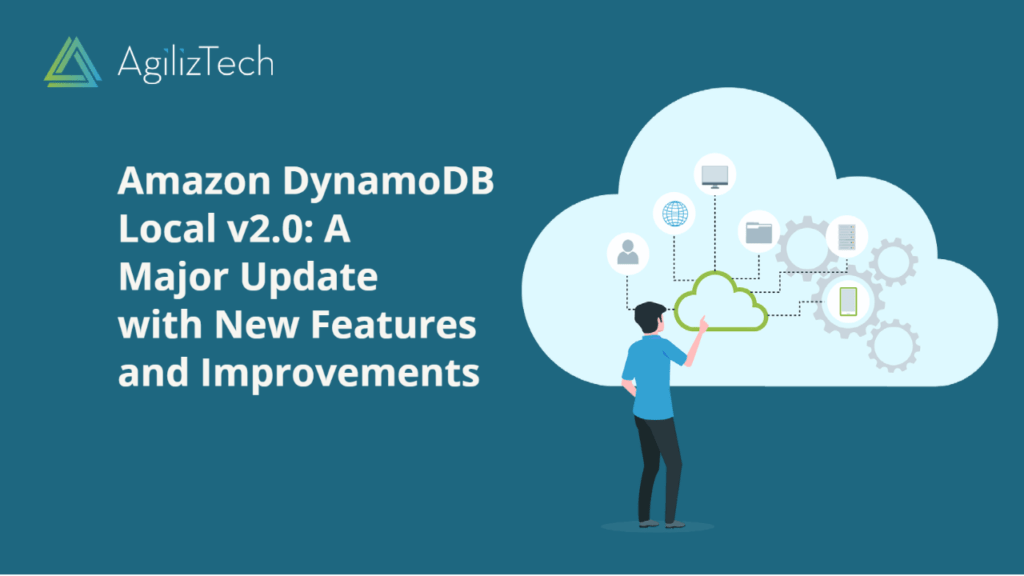
Amazon DynamoDB Local v2.0: What’s New
Learn About Amazon DynamoDB local version 2.0
Amazon DynamoDB is a NoSQL database service that is fully managed and guarantees speedy and consistent performance while also being seamlessly scalable. It allows you to store and query any data without worrying about servers, provisioning, or maintenance. But what if you want to develop and test your applications locally without accessing the DynamoDB web service? That’s where Amazon DynamoDB local comes in handy.
What is Amazon DynamoDB local?
Amazon DynamoDB local is a downloadable version of Amazon DynamoDB that you can run on your computer. It simulates the DynamoDB web service so that you can use it with your existing DynamoDB API calls.
It is ideal for development and testing, as it helps you save on throughput, data storage, and data transfer fees. In addition, you don’t need an internet connection while you work on your application. You can use it with any supported SDKs, such as Java, Python, Node.js, Ruby, .NET, PHP, and Go. You can also use it with the AWS CLI or the AWS Toolkit for Visual Studio.
What’s New in Amazon DynamoDB Local version 2.0?
Amazon DynamoDB local version 2.0 was released on July 5, 2023. It has some important changes and improvements that you should know about.
Migration to jakarta.* namespace
The most significant change is the migration to use the jakarta.* namespace instead of the javax.* namespace. This means that Java developers can now use Amazon DynamoDB local with Spring Boot 3 and frameworks such as Spring Framework 6 and Micronaut Framework 4 to build modernized, simplified, and lightweight cloud-native applications.
The jakarta.* namespace is part of the Jakarta EE project, which is the successor of Java EE. Jakarta EE aims to provide a platform for developing enterprise applications using Java technologies.
Suppose you are using Java SDKs or tools that rely on the javax.* namespace, you will need to update them to use the jakarta.* namespace before using Amazon DynamoDB local version 2.0. For more information, see Migrating from javax.* to jakarta.*.
Updated Access Key ID convention
Another change is the updated convention for the Access Key ID when using Amazon DynamoDB local. The new convention specifies that the AWS_ACCESS_KEY_ID can only contain letters (A–Z, a–z) and numbers (0–9).
This change was made to align with the Access Key ID convention for the DynamoDB web service, which also only allows letters and numbers. This helps avoid confusion and errors when switching between Amazon DynamoDB local and the DynamoDB web service.
If you use an Access Key ID containing other characters, such as dashes (-) or underscores (_), you must change it before using version 2.0. For more information, see Troubleshooting “The Access Key ID or Security Token is Invalid” Error After Upgrading DynamoDB Local to Version 2.0 or Greater.
Bug fixes and performance improvements
It also includes several bug fixes and performance improvements that enhance the stability and usability.
For example, one of the bug fixes addresses an issue where version 1.19.0 had an empty jar file in its repository, causing errors when downloading or running it. This issue has been resolved in version 2.0.
Getting Started with Amazon DynamoDB local version 2.0
- Getting started is easy and free. You can download it from Deploying DynamoDB locally on your computer and follow the instructions to install and run it on your preferred operating system (macOS, Linux, or Windows).
- You can also use as an Apache Maven dependency or as a Docker image if you prefer those options.
- Once you have Amazon DynamoDB local running on your computer, you can use any of the supported SDKs, tools, or frameworks to develop and test your applications locally.
Conclusion
Amazon DynamoDB local version 2.0 is a great way to develop and test your applications locally without accessing the DynamoDB web service. It has some important changes and improvements that make it compatible with the latest Java technologies and conventions. Suppose you are a Java developer who wants to use it with Spring Boot 3 or other frameworks that use the jakarta.* namespace, you should upgrade to version 2.0 as soon as possible.
If you are using other SDKs or tools that rely on the javax.* namespace or an Access Key ID containing other characters, you will need to update them before using. It is free to download and use, and it works with your existing DynamoDB API calls. You can start with it today by downloading it from Deploying DynamoDB locally on your computer.


